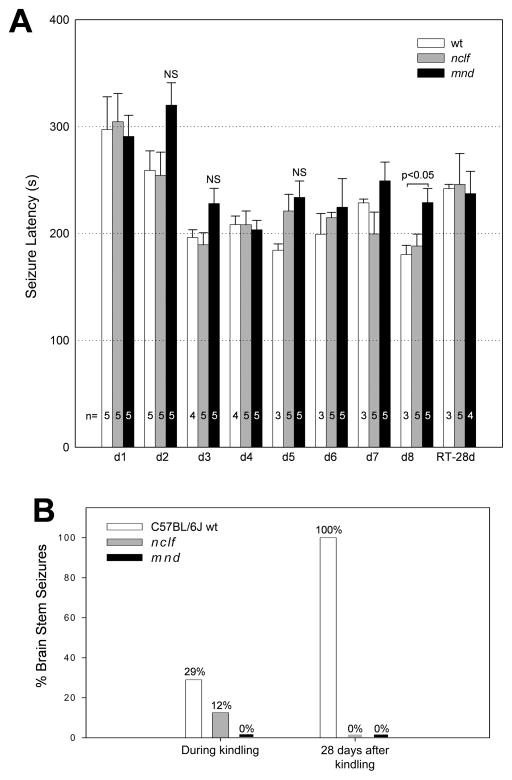Figure 2.
Immature wild-type, nclf, and mnd mice show similar seizure latencies but an altered seizure phenotype during kindling and retesting. Wild-type, nclf, and mnd mice at 21 days to 25 days of age underwent kindling (seizure induction by flurothyl once a day for 8 consecutive days) and subsequent retesting (seizure induction by flurothyl once a week for 4 weeks). Columns and bars represent mean ± standard error of the mean (n = 3–5). (A) Seizure induction latencies during the 8 days of kindling (day 1 through day 8) and in the 4th (28th day) post kindling retest (RT-28 days). Statistical analysis was performed using unpaired t test: P < .05 as compared with wild-type; NS: not significant. (B) Seizure phenotypes during the 8 days of kindling and in the 4th (28th day) post kindling retest. Eight-day kindling in wild-type mice produced the expected shift from cortical to brainstem seizures when the animals were retested 28 days later. All (100%) wild-type mice demonstrated a brainstem seizure, whereas none (0%) of the nclf or mnd mice converted to the expected phenotype.

